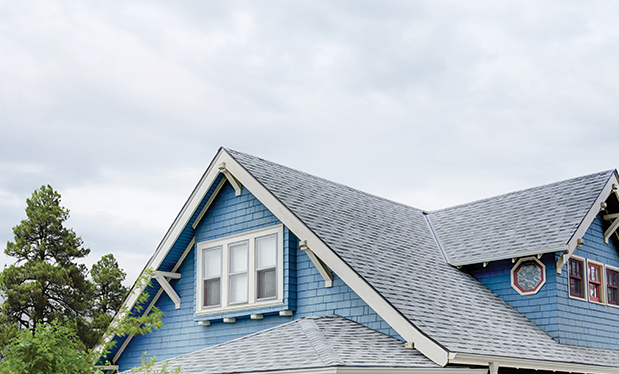Commercial and industrial insurer FM Global and its code-approved testing agency subsidiary, FM Approvals, have implemented a Very Severe Hail (VSH) impact-resistance classification that could affect some of the work you do.
FM Global guidelines
FM Global traditionally has recommended its insured building owners use moderate hail- (MH-) and severe hail- (SH-) classified roof systems for buildings located in areas FM Global considers to be susceptible to moderate or severe hail impacts. FM Loss Prevention Data Sheet 1-34 (FM 1-34), "Hail Damage," provides a map identifying these regions.
In recent years, the U.S. insurance industry has experienced increases in losses from hail in terms of the number of claims experienced and costs of those claims. A majority of the hail damage occurs to roof systems and other rooftop components.
In the latest version of FM 1-34, dated October 2014, FM Global has identified a new VSH region, encompassing Oklahoma, Kansas and some northern counties in Texas. FM 1-34's Table 3 identifies the specific northern Texas counties.
FM Global indicates designating this area as a VSH region is supported by data from the National Oceanic and Atmospheric Administration's National Weather Service and National Center for Environmental Protection's Storm Prediction Center, which shows a concentration of reports of hail greater than 2 inches in diameter in this geographical region.
Until recently, FM Approvals has not had VSH-classified roof systems available to satisfy its recommendation in the VSH region. In the interim, FM 1-34 has recommended using assemblies tested to a Class 4 rating using FM 4473, "Specification Test Standard for Impact Resistance Testing of Rigid Roofing Materials by Impacting with Freezer Ice Balls."
FM 1-34 indicates aggregate- and paver-ballasted roof systems can be substituted for MH- and SH-classified roof systems in the MH and SH regions. However, FM Global restricts the use of aggregate-ballasted roof systems on buildings taller than 150 feet or in areas where the design wind speed is 100 mph or greater.
FM has indicated only paver-surfaced roof systems can be substituted for a VSH-classified roof system.
FM 1-34 also contains recommendations for skylights, rooftop HVAC equipment and other critical outdoor equipment in the MH, SH and VSH regions.
Hail classifications
FM Approvals traditionally has tested and classified membrane roof systems for MH- and SH-impact resistances using FM 4470, "Approval Standard for Single-Ply, Polymer-Modified Bitumen Sheet, Built-Up Roof (BUR) and Liquid Applied Roof Assemblies for use in Class 1 and Noncombustible Roof Deck Construction." This is the same test method on which many FM Approvals roof system classifications are based.
Using FM 4470's procedure, MH-classified roof systems withstand a 2-inch-diameter steel ball weighing 1.19 pounds dropped from a height of 81 inches in a section of tubing. This results in an impact energy of about 8 foot pounds (ft-lbs.) on the surface of the roof system test specimen.
SH-classified roof systems withstand the same 2-inch-diameter steel ball dropped from a height of 141.5 inches, resulting in an impact energy of about 14 ft-lbs. on the surface of the roof system test specimen.
FM Approvals recently updated its impact-resistance test method to include testing for the VSH classification. The new testing involves propelling 2-inch-diameter preformed ice balls at roof system test specimens using an ice ball launcher. The ice balls are propelled at 152 to 160 feet per second, resulting in an impact energy of 53 to 58 ft-lbs. on the surface of the roof system test specimen.
A notation in FM Approval's RoofNav application (www.RoofNav.com) indicates as of Sept. 21, 2017, the first VSH-classified assemblies have been approved with about 40 assemblies meeting the criteria. This number is a small fraction of the total number of roof assemblies included in RoofNav.
Closing thoughts
Roof system designers need to be aware of FM Global's guidelines and FM Approvals' classifications for impact resistance. For low-slope roofing projects on buildings insured by FM Global in Oklahoma, Kansas and some northern counties in Texas, FM's VSH-classified roof systems may be required.
Building owners and roofing professionals need to realize FM Global's VSH guidelines and FM Approvals' currently low number of VSH-classified roof systems significantly limit the number of roof systems available. I recently performed a RoofNav query and found only 44 of the 988,087 roof systems included in RoofNav are VSH-classified.
You should contact roof system manufacturers regarding specific roof systems that comply with FM Approvals' new VSH classification.
Finally, I caution roofing professionals against representing roof components or systems tested using impact-resistant criteria from FM Approvals or others as being "hail-resistant" or "hail-proof." Although FM Approvals' classifications are based on conditioned and unconditioned test specimens, there is little real correlation between laboratory impact testing at defined temperatures using steel balls or preformed ice balls and actual rooftop conditions where real hail stones can affect roof surfaces of varying ages, ranges of temperatures, and changing wind speeds and direction. Laboratory testing may provide relative measures or an index rating; these are not real-world rooftop conditions.
Mark S. Graham is NRCA's vice president of technical services.
@MarkGrahamNRCA



